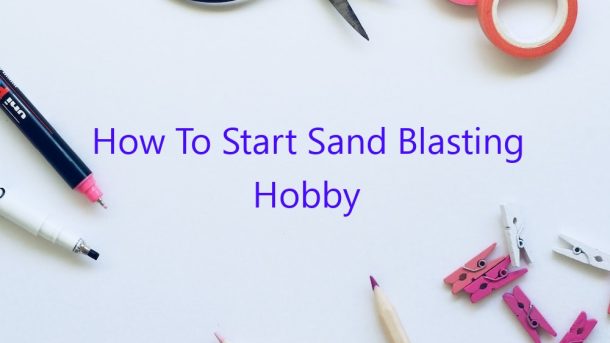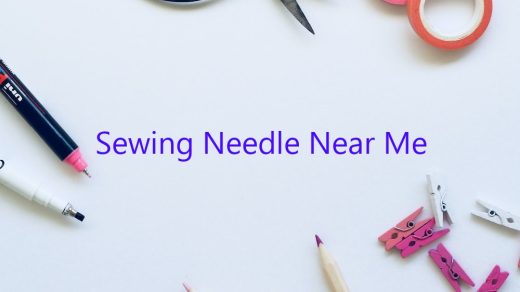Sand blasting is a process that uses a pressurized stream of abrasive material to clean or strip surfaces. It is a popular hobby because it is relatively easy to learn and can be rewarding.
The first step in starting a sand blasting hobby is to purchase the necessary equipment. This includes a blasting cabinet, a blaster, abrasive media, and safety gear. The blasting cabinet is the most important piece of equipment, as it houses the blaster and the abrasive media. The cabinet should be large enough to accommodate the blaster and the media.
The blaster is the device that propels the abrasive media. It can be a hand-held blaster or a blaster that is mounted in the blasting cabinet. The type of blaster that is used will depend on the size of the cabinet. A hand-held blaster is best for small cabinets, while a blaster that is mounted in the cabinet is best for larger cabinets.
The abrasive media is the material that is used to clean or strip surfaces. It comes in a variety of shapes and sizes, and can be made from a variety of materials. The most common type of abrasive media is sand, but other types of media, such as glass beads, can also be used.
The final piece of equipment that is needed is safety gear. This includes a face shield, a pair of gloves, and a dust mask. The face shield and gloves protect the hands and face from the abrasive media, while the dust mask protects the lungs from the dust created by the blasting process.
The second step in starting a sand blasting hobby is to learn the basics of the process. This includes learning how to use the blaster and the abrasive media. It is also important to learn the safety procedures that need to be followed when blasting.
The third step in starting a sand blasting hobby is to find a project to work on. There are a variety of projects that can be tackled, such as cleaning or stripping old paint from a piece of furniture, removing rust from a piece of metal, or etching a design into a piece of glass.
The fourth step in starting a sand blasting hobby is to practice. It is important to practice the techniques that will be used on the project before starting the project. This will help ensure that the project is done correctly and safely.
The fifth step in starting a sand blasting hobby is to have fun. Sand blasting can be a fun and rewarding hobby. It is a great way to relax and relieve stress.
Contents
What do I need to start sandblasting?
If you’re interested in starting sandblasting, there are a few things you need to know before you get started. In this article, we’ll go over the basics of what you need to get started.
The first thing you’ll need is a blasting cabinet. This is the enclosure in which you’ll be blasting your objects. It should be large enough to accommodate the size of the objects you’re blasting, and it should be well-ventilated to prevent dust from building up.
You’ll also need a blasting gun and a source of compressed air. The blasting gun is what you’ll use to blast the objects, and the compressed air will provide the power to do so.
Finally, you’ll need some sandblasting media. This is the grit or powder that you’ll be using to blast the objects. There are a variety of different types of sandblasting media available, so you can choose the one that best suits your needs.
Once you have all of these things, you’re ready to start sandblasting!
How do I start a small sandblasting business?
Starting a small sandblasting business can be a lucrative endeavor, but it’s important to do your homework before you get started. Here are a few tips to help you get started:
1. Research the market. Before starting a small sandblasting business, it’s important to do your research and make sure there is a market for your services. Do some online research to find out what other businesses in your area offer sandblasting services, and make sure you can compete with them on price and quality.
2. Invest in the right equipment. In order to offer sandblasting services, you’ll need to invest in some basic equipment, including a sandblaster, blasting cabinet, and respirator. You can find affordable equipment online or at auction sites, but be sure to read the reviews before you make a purchase.
3. Develop a business plan. A business plan is essential for any small business, and it’s especially important for a sandblasting business. Your business plan should outline your business goals, strategies for reaching those goals, and a financial forecast.
4. Market your business. Once your business is up and running, it’s important to market it effectively. Start by creating a website and listing your services on online directories. You can also distribute flyers and brochures in your local community, and participate in local business events.
5. Stay safe. When sandblasting, it’s important to always follow safety precautions. Make sure you read and understand the safety guidelines for your equipment, and always wear the appropriate safety gear.
Can you sandblast yourself?
Can you sandblast yourself? This is a question that many people ask, and the answer is yes, you can sandblast yourself. However, there are some things that you need to keep in mind before you do.
The first thing that you need to do is make sure that you have the right equipment. You will need a sandblaster, safety goggles, a dust mask, and gloves. It is also a good idea to wear a long-sleeved shirt and pants to protect your skin.
The next thing that you need to do is make sure that you are familiar with the proper safety procedures. Always wear the safety goggles and the dust mask when you are sandblasting. Make sure that the sandblaster is turned off when you are not using it.
The third thing that you need to do is choose the right sand. You should use a fine sand for sandblasting. Never use sandpaper or metal grit.
The fourth thing that you need to do is prepare the surface that you want to sandblast. You should remove any paint or rust from the surface. You should also make sure that the surface is clean and dry.
The fifth thing that you need to do is start sandblasting. always use short, gentle strokes. Do not use too much pressure, or you will damage the surface.
The sixth thing that you need to do is clean up the area when you are finished. Make sure that all of the sand is cleaned up, and dispose of it properly.
How much does it cost to sandblast per hour?
How much does it cost to sandblast per hour?
The cost of sandblasting can vary depending on the size of the job, the equipment needed, and the location of the job. Generally, the cost ranges from $50 to $200 per hour.
Some factors that can affect the cost of sandblasting include the type of surface being blasted, the type of media used, the blasting pressure, and the distance the media needs to travel.
The cost of sandblasting also depends on the company you hire. Some companies charge a flat rate, while others charge by the hour.
If you’re looking for a sandblasting contractor, be sure to ask for quotes from several companies to get the best price.
How big of an air compressor do I need for a sandblaster?
In order to answer the question of how big of an air compressor do I need for a sandblaster, it is first important to understand what a sandblaster is and what it is used for. A sandblaster is a machine that uses high-pressure air to blast away unwanted material from a surface. This can be anything from paint and rust to old mortar and concrete.
The size of the air compressor you need for a sandblaster depends on the size of the sandblaster itself and the amount of air it requires. Most sandblasters require at least 6 CFM of air flow, so a compressor with at least that much capacity is generally recommended. Larger sandblasters may require more air, so it is important to consult the specs of the sandblaster you are using to determine the exact requirements.
What size air compressor do I need for sand blasting?
Sand blasting is a process that uses compressed air to fire sand at a surface to remove paint, rust, or other debris. The amount of air needed to do this job will depend on the size of the compressor and the type of sand blaster being used.
A small portable compressor, like those used for painting, may be able to handle light sand blasting tasks. For heavier work, a larger compressor will be needed. The size of the compressor needed will also depend on the distance the sand needs to travel to the surface being blasted.
Some sand blasters use a siphon system to draw the sand up from a container below the blaster. Others use a compressor to force the sand out through a nozzle. In either case, the amount of air needed will be greater than what is needed for just painting.
A good rule of thumb is to multiply the CFM rating of the compressor by 1.5 to get the amount of air in cubic feet per minute that will be needed for sand blasting. So, if the compressor has a CFM rating of 6, then 9 cubic feet of air per minute will be needed for sand blasting.
Is there a demand for sandblasting?
Sandblasting is the process of propelling a stream of sand at high speed against a surface to clean, shape, or remove material. It is a common industrial process used to smooth, clean and prepare surfaces for further finishing or painting.
The use of sandblasting has many applications, from preparing a surface for painting, to cleaning a surface of rust or corrosion, to shaping a surface. It is a versatile process that can be used on a wide range of materials, including metal, plastic, wood, and masonry.
Sandblasting is a popular industrial process because it is fast, efficient, and versatile. It can be used to clean, shape, or remove material from a wide range of surfaces, making it a versatile tool for industrial applications. Additionally, it is a relatively fast process, which makes it a desirable choice for industrial applications where time is of the essence.




